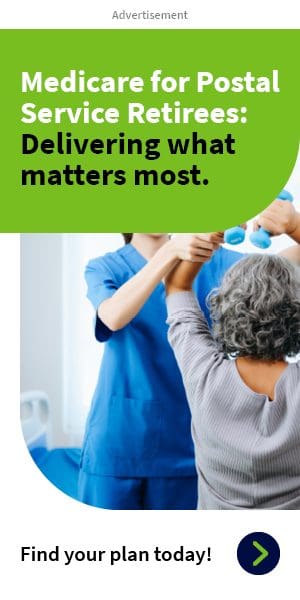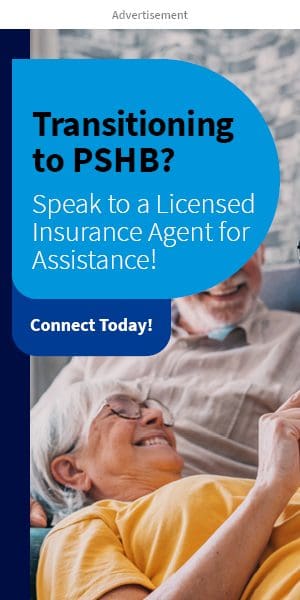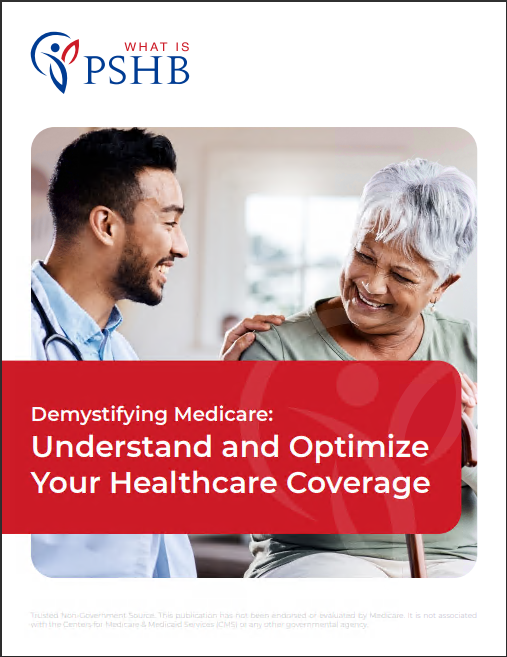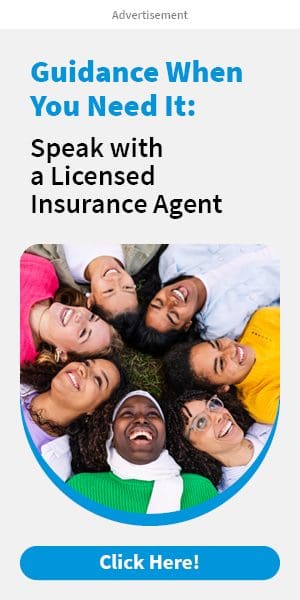Key Takeaways
-
Not everyone automatically qualifies for Postal Service Health Benefits (PSHB) in 2025, even if you’re a USPS retiree or employee. Eligibility depends on specific employment status, retirement date, and Medicare enrollment.
-
Missing certain timelines—like enrolling in Medicare Part B when required—could mean losing access to important PSHB coverage and prescription drug benefits.
Understanding PSHB Eligibility: More Than Just Employment Status
The Postal Service Health Benefits (PSHB) Program officially replaced Federal Employees Health Benefits (FEHB) for USPS workers and retirees starting January 1, 2025. But just because you’re a USPS employee or retiree doesn’t automatically mean you qualify for or maintain this coverage. There are specific criteria, exceptions, and deadlines you need to be aware of.
Eligibility for PSHB in 2025 hinges on three core factors:
-
Your current employment or retirement status
-
Your Medicare eligibility and enrollment
-
Your participation during the Open Season or qualifying life events
Let’s break each of these down so you can see how they apply to your situation.
1. Employment and Retirement Categories That Determine Eligibility
To understand whether you’re eligible for PSHB coverage, first identify where you stand within the USPS workforce or retirement system. Here’s how it breaks down:
Currently Employed USPS Workers
If you’re actively working for the USPS in 2025, you’re eligible for PSHB coverage. However, enrollment is not automatic if you weren’t already enrolled in FEHB. You need to choose a PSHB plan during the annual Open Season or after a qualifying life event.
Retirees of the USPS
You are eligible for PSHB if:
-
You retired from the USPS with an immediate annuity.
-
You were enrolled in an FEHB plan when you retired.
-
You retired from USPS prior to January 1, 2025 and your coverage was carried into retirement.
If these conditions are met, you’re automatically transitioned into a PSHB plan, unless you opt to make changes during Open Season.
Annuitants Who Are Not USPS Retirees
Some annuitants receiving a federal annuity but who never worked for USPS are not eligible for PSHB. This includes spouses or dependents covered under FEHB by a federal retiree who was not USPS.
2. Mandatory Medicare Part B Enrollment for Certain Groups
Medicare Part B enrollment has become a pivotal eligibility factor in 2025. This is especially important for annuitants and family members who are Medicare-eligible.
Who Must Enroll in Medicare Part B
You must be enrolled in Medicare Part B to stay eligible for PSHB in the following cases:
-
You are a USPS annuitant (retiree) entitled to Medicare Part A.
-
You are a family member of a USPS annuitant and entitled to Medicare Part A.
Failure to enroll in Medicare Part B by the required deadline can lead to loss of certain PSHB benefits, especially prescription drug coverage through the integrated Medicare Part D EGWP plan.
Key Exceptions to the Rule
You are not required to enroll in Medicare Part B for PSHB if:
-
You retired from USPS on or before January 1, 2025, and are not already enrolled in Medicare Part B.
-
You are an active USPS employee aged 64 or older as of January 1, 2025.
-
You reside outside the United States and are not eligible for Medicare.
-
You are enrolled in VA Health Care or covered under the Indian Health Service.
3. How Open Season and Qualifying Life Events Affect Eligibility
What Happened During the 2024 Open Season
The first Open Season for PSHB ran from November to December 2024, and all eligible USPS employees and annuitants had the opportunity to:
-
Enroll in a PSHB plan.
-
Make changes to their coverage.
-
Opt out, if they had other coverage.
If you were eligible and failed to take action, you were automatically enrolled in a comparable PSHB plan to your prior FEHB coverage, unless you were not enrolled in FEHB to begin with.
What Happens Outside of Open Season
You can only make changes to your PSHB coverage outside of Open Season if you experience a Qualifying Life Event (QLE), such as:
-
Marriage or divorce
-
Birth or adoption of a child
-
Loss of other health coverage
These events allow you to make updates within 60 days of the change.
4. The Role of Prescription Drug Coverage in PSHB Eligibility
All Medicare-eligible PSHB enrollees are automatically enrolled in a Medicare Part D Employer Group Waiver Plan (EGWP) through their PSHB plan. But here’s the catch—you only get this benefit if you’re enrolled in both Medicare Part A and Part B.
Consequences of Not Enrolling in Part B
If you fail to enroll in Medicare Part B when required:
-
You lose access to the integrated Part D coverage.
-
You may face gaps in prescription drug coverage.
-
You might not be eligible for future re-enrollment in the drug benefit unless you meet special criteria.
This could significantly increase your out-of-pocket costs for medications.
5. Coverage for Family Members: Eligibility Isn’t Automatic
Just because you qualify for PSHB doesn’t mean your entire family does automatically. Eligibility for dependents is subject to several rules:
-
Spouses and children must meet dependent criteria defined by OPM.
-
They must be listed on your enrollment.
-
If they are Medicare-eligible, they may also be required to enroll in Part B.
Even if your family was covered under your FEHB plan, they may not maintain coverage under PSHB if these conditions aren’t met.
6. The Impact of Opting Out or Delaying Enrollment
If you choose to opt out of PSHB when first eligible or delay enrollment, you may face restricted opportunities to rejoin later. Here’s what you should consider:
-
You may not be eligible to re-enroll unless you experience a qualifying life event or wait until the next Open Season.
-
For Medicare-eligible enrollees, opting out of the Part D benefit can leave you without drug coverage.
-
If you’re Medicare-eligible and didn’t enroll in Part B by the deadline, you may be subject to late enrollment penalties and coverage gaps.
7. Eligibility if You Were Covered Under a Family Member’s FEHB Plan
If you’re covered under a family member’s FEHB plan but not USPS-affiliated yourself, your eligibility depends on whether that family member is USPS:
-
If the policyholder is a USPS retiree or employee: You likely transitioned to PSHB.
-
If the policyholder is not USPS: You remain under FEHB, not PSHB.
This distinction is important for those managing care for multiple family members, especially retirees.
8. How PSHB Coordinates with Other Benefits
PSHB works alongside other federal benefit programs, but it doesn’t replace them. Here’s how they fit together:
-
FEDVIP (Federal Dental and Vision): Separate enrollment is still required; PSHB doesn’t affect eligibility.
-
FEGLI (Federal Employees’ Group Life Insurance): Unrelated to PSHB.
-
FLTCIP (Federal Long-Term Care Insurance): Also separate.
-
FSAFEDS (Flexible Spending Accounts): Remains separate, though available only to active employees.
You should review these programs separately to understand how they interact with your PSHB coverage.
9. Getting Support When You’re Not Sure
Because the 2025 transition to PSHB includes a variety of eligibility factors, it’s easy to get confused. Luckily, help is available:
-
Visit the OPM website or USPS resources like LiteBlue or KeepingPosted.org.
-
Call the PSHB Navigator Help Line if you’re unclear about enrollment status or plan choices.
-
Reach out to a licensed agent listed on this website for professional advice on what steps to take.
Why Knowing Your Eligibility Now Matters
Your access to PSHB benefits in 2025 depends on the actions you take today. Whether it’s enrolling in Medicare Part B, confirming your family’s eligibility, or updating your plan during a QLE, each step matters.
Take the time to check your eligibility, understand any exceptions that apply to your situation, and get support when needed. The right decisions now can help you secure stable health coverage for years to come.
If you have questions about your eligibility or what steps to take, speak with a licensed agent listed on this website to get the guidance you need.









